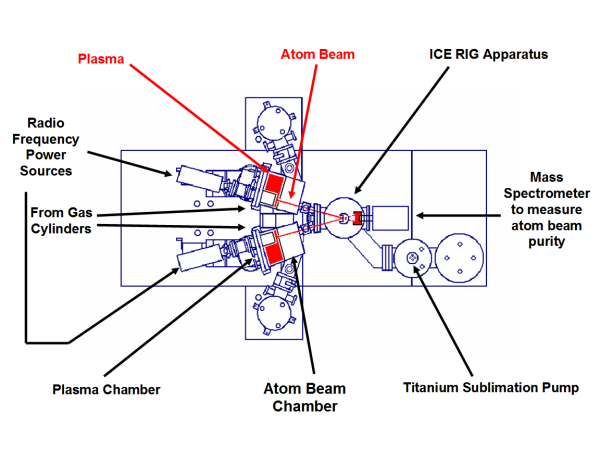The Heriot-Watt Astrochemistry Research Group |
 |
Dual Atomic Beams
The process for creating an atom beam is split into three stages. The first part is to leak the desired gas into the plasma chamber of the ultrahigh vacuum apparatus (see figure 1). However, the particles in the gas are molecule so radio frequency is used to break the molecular bonds joining the atoms together. The second stage is to excite the gaseous atoms to produce a plasma. Figure 2 shows the characteristic pink/red of the hydrogen plasma and pink for the oxygen plasma.


The final stage is to create the atom beam by allowing the plasma to escape into the neighbouring beam chamber (see figure 1) through a small hole. The purity of each atom beam is then tested using a USB fibre optic spectrometer (attached to the back of the radio frequency power unit) and a mass spectrometer in line with the beam.
The dual atom beams in these experiments (one hydrogen, the other oxygen) are used to mimic the surface formation of water on interstellar dust grains. The resultant product is then analysed using Temperature Programmed Desorption (TPD), Quartz Crystal Microgravimetry (QCM) and Reflection-Absorption Infrared Spectroscopy (RAIRS).